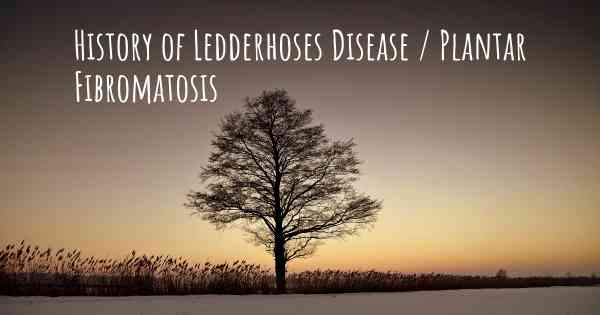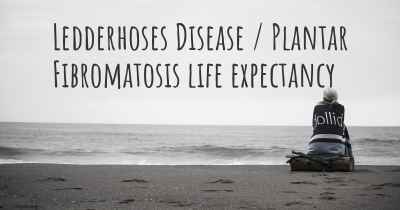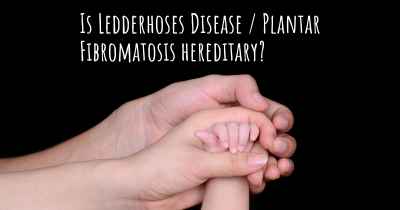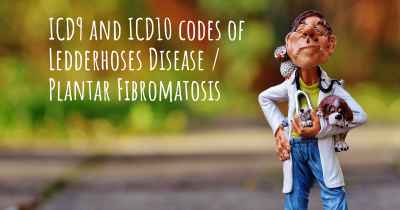What is the history of Ledderhoses Disease / Plantar Fibromatosis?
When was Ledderhoses Disease / Plantar Fibromatosis discovered? What is the story of this discovery? Was it coincidence or not?

Ledderhose's Disease, also known as Plantar Fibromatosis, is a rare medical condition characterized by the development of benign fibrous nodules or growths on the plantar fascia, the thick band of tissue that runs along the bottom of the foot. These nodules typically form in the arch of the foot and can cause pain, discomfort, and difficulty walking.
The history of Ledderhose's Disease dates back to the late 19th century when it was first described by a German surgeon named Georg Ledderhose. Ledderhose, born in 1855, was a prominent figure in the field of orthopedic surgery and made significant contributions to the understanding and treatment of various foot conditions.
In 1894, Ledderhose published a paper in which he detailed the clinical features and surgical treatment of a condition he referred to as "plantar aponeurosis nodular fasciitis." He observed that patients with this condition presented with firm, painless nodules on the plantar fascia, which gradually increased in size and caused discomfort.
Over the years, Ledderhose's Disease gained recognition and became more widely known as Plantar Fibromatosis, reflecting the fibrous nature of the nodules. However, it wasn't until the mid-20th century that further advancements were made in understanding the disease.
In the 1950s, Dr. Donald S. Thompson, an American orthopedic surgeon, conducted extensive research on Plantar Fibromatosis. He proposed that the condition was caused by the proliferation of fibroblasts, the cells responsible for producing connective tissue, within the plantar fascia. Dr. Thompson's work shed light on the underlying pathology of the disease and provided a basis for future studies.
Since then, numerous studies have been conducted to investigate the etiology, pathogenesis, and treatment options for Ledderhose's Disease. While the exact cause of the condition remains unknown, several risk factors have been identified, including a family history of the disease, certain genetic mutations, and certain medical conditions such as diabetes and liver disease.
The diagnosis of Ledderhose's Disease is primarily based on clinical examination and imaging studies. Physical examination typically reveals the presence of palpable nodules on the plantar fascia, which may be tender to touch. Imaging techniques such as ultrasound or magnetic resonance imaging (MRI) can be used to visualize the extent and location of the nodules.
Treatment options for Ledderhose's Disease vary depending on the severity of symptoms and the impact on daily activities. Conservative measures, such as orthotic devices, physical therapy, and steroid injections, may be employed to alleviate pain and improve mobility. In more severe cases, surgical intervention may be necessary to remove the fibrous nodules and release the tension on the plantar fascia.
While Ledderhose's Disease is considered a chronic condition with no definitive cure, ongoing research aims to improve our understanding of the disease and develop more effective treatment strategies. The rarity of the condition poses challenges in conducting large-scale clinical trials, but advancements in medical technology and collaboration among researchers offer hope for future breakthroughs.
In conclusion, Ledderhose's Disease, or Plantar Fibromatosis, has a rich history that spans over a century. From its initial description by Georg Ledderhose in the late 19th century to the advancements in understanding and treatment made by researchers like Donald S. Thompson, the disease has gradually become better recognized and managed. While there is still much to learn about Ledderhose's Disease, ongoing research and medical advancements continue to provide hope for improved outcomes and quality of life for those affected by this rare condition.








